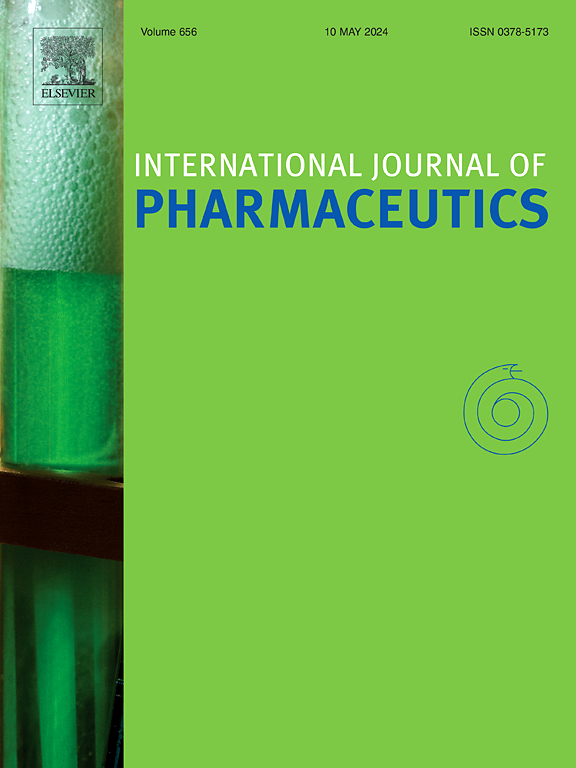Gastroretentive fibrous dosage forms for prolonged delivery of sparingly-soluble tyrosine kinase inhibitors. Part 4: Experimental validation of the models of drug concentration in blood
IF 5.3
2区 医学
Q1 PHARMACOLOGY & PHARMACY
引用次数: 0
Abstract
In this final part, the models of drug concentration in blood developed in Part 3 are validated on dogs. Both gastroretentive fibrous and immediate-release particulate dosage forms containing 200 mg nilotinib were tested. After administering, the fibrous dosage form expanded linearly with time in the stomach, to about 1.5 times the initial radius by 4 hours. The expanded dosage form fractured after 10 hours, and then passed into the intestine. The drug concentration in blood exhibited a broad peak with a maximum of 0.51 μg/ml and a width at half-height of 10.2 hours. By contrast, after administering the immediate-release particulate dosage form the drug concentration in blood exhibited a sharp peak with a maximum of 0.68 μg/ml and a width at half-height of just 3.6 hours. The experimental data validate the theoretical models reasonably. Thus, upon repeated dosing, the gastroretentive fibrous dosage forms presented in this study enable a constant drug concentration in blood for enhancing the efficacy and mitigating side effects of cancer therapies.

用于延长稀溶性酪氨酸激酶抑制剂给药时间的胃肠保留纤维剂型。第 4 部分:血液中药物浓度模型的实验验证。
在最后一部分中,在狗身上验证了第三部分中建立的血液中药物浓度模型。我们测试了含有 200 毫克尼洛替尼的缓释胃保留纤维剂型和速释微粒剂型。给药后,纤维剂型在胃内随时间呈线性膨胀,4 小时后膨胀到初始半径的 1.5 倍左右。膨胀后的剂型在 10 小时后断裂,然后进入肠道。血液中的药物浓度显示出一个宽阔的峰值,最大值为 0.51 μg/ml,半高宽度为 10.2 h。相比之下,服用速释胶囊后,血液中的药物浓度呈现出一个尖锐的峰值,最大值为 0.68 μg/ml,半高宽度仅为 3.6 小时。实验数据合理地验证了理论模型。本研究设计的胃保留纤维剂型可使血液中的药物浓度保持稳定,从而提高药物疗效并减轻副作用。
本文章由计算机程序翻译,如有差异,请以英文原文为准。
求助全文
约1分钟内获得全文
求助全文
来源期刊
CiteScore
10.70
自引率
8.60%
发文量
951
审稿时长
72 days
期刊介绍:
The International Journal of Pharmaceutics is the third most cited journal in the "Pharmacy & Pharmacology" category out of 366 journals, being the true home for pharmaceutical scientists concerned with the physical, chemical and biological properties of devices and delivery systems for drugs, vaccines and biologicals, including their design, manufacture and evaluation. This includes evaluation of the properties of drugs, excipients such as surfactants and polymers and novel materials. The journal has special sections on pharmaceutical nanotechnology and personalized medicines, and publishes research papers, reviews, commentaries and letters to the editor as well as special issues.

 求助内容:
求助内容: 应助结果提醒方式:
应助结果提醒方式:


